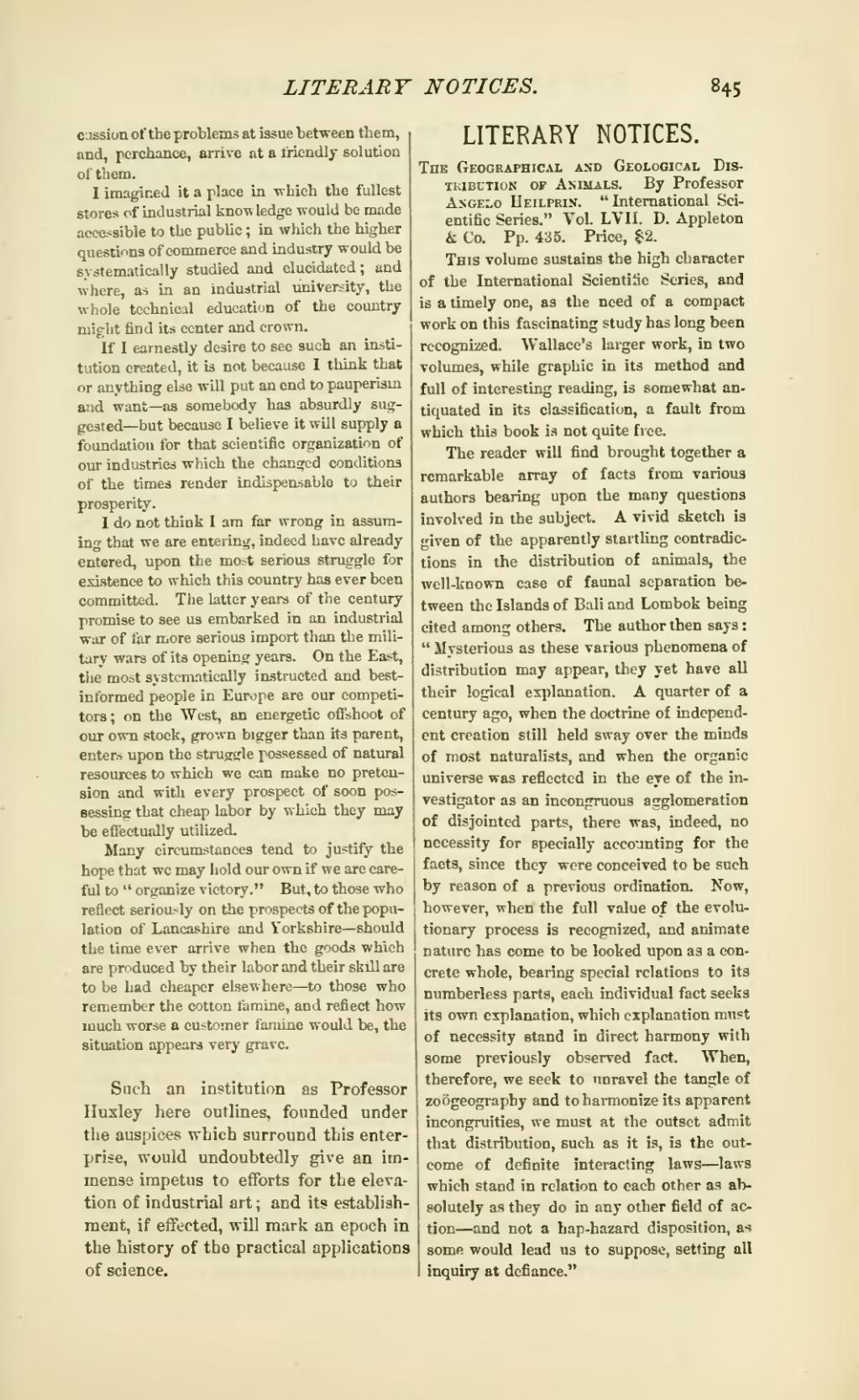cussion of the problems at issue between them, and, perchance, arrive at a friendly solution of them.
I imagined it a place in which the fullest stores of industrial knowledge would be made accessible to the public; in which the higher questions of commerce and industry would be systematically studied and elucidated; and where, as in an industrial university, the whole technical education of the country might find its center and crown.
If I earnestly desire to see such an institution created, it is not because I think that or anything else will put an end to pauperism and want—as somebody has absurdly suggested—but because I believe it will supply a foundation for that scientific organization of our industries which the changed conditions of the times render indispensable to their prosperity.
I do not think I am far wrong in assuming that we are entering, indeed have already entered, upon the most serious struggle for existence to which this country has ever been committed. The latter years of the century promise to see us embarked in an industrial war of far more serious import than the military wars of its opening years. On the East, the most systematically instructed and best-informed people in Europe are our competitors; on the West, an energetic offshoot of our own stock, grown bigger than its parent, enters upon the struggle possessed of natural resources to which we can make no pretension and with every prospect of soon possessing that cheap labor by which they may be effectually utilized.
Many circumstances tend to justify the hope that we may hold our own if we arc careful to "organize victory." But, to those who reflect seriously on the prospects of the population of Lancashire and Yorkshire—should the time ever arrive when the goods which are produced by their labor and their skill are to be had cheaper elsewhere—to those who remember the cotton famine, and reflect how much worse a customer famine would be, the situation appears very grave.Such an institution as Professor Huxley here outlines, founded under the auspices which surround this enterprise, would undoubtedly give an immense impetus to efforts for the elevation of industrial art; and its establishment, if effected, will mark an epoch in the history of the practical applications of science.
The Geographical and Geological Distribution of Animals. By Professor Angelo Heilprin. "International Scientific Series." Vol. LVII. D. Appleton & Co. Pp. 435. Price, $2.
This volume sustains the high character of the International Scientific Series, and is a timely one, as the need of a compact work on this fascinating study has long been recognized. Wallace's larger work, in two volumes, while graphic in its method and full of interesting reading, is somewhat antiquated in its classification, a fault from which this book is not quite free.
The reader will find brought together a remarkable array of facts from various authors bearing upon the many questions involved in the subject. A vivid sketch is given of the apparently startling contradictions in the distribution of animals, the well-known case of faunal separation between the Islands of Bali and Lombok being cited among others. The author then says: "Mysterious as these various phenomena of distribution may appear, they yet have all their logical explanation. A quarter of a century ago, when the doctrine of independent creation still held sway over the minds of most naturalists, and when the organic universe was reflected in the eve of the investigator as an incongruous agglomeration of disjointed parts, there was, indeed, no necessity for specially accounting for the facts, since they were conceived to be such by reason of a previous ordination. Now, however, when the full value of the evolutionary process is recognized, and animate nature has come to be looked upon as a concrete whole, bearing special relations to its numberless parts, each individual fact seeks its own explanation, which explanation must of necessity stand in direct harmony with some previously observed fact. When, therefore, we seek to unravel the tangle of zoögeography and to harmonize its apparent incongruities, we must at the outset admit that distribution, such as it is, is the outcome of definite interacting laws—laws which stand in relation to each other as absolutely as they do in any other field of action—and not a haphazard disposition, as some would lead us to suppose, setting all inquiry at defiance."
